MERSCOPE PanNeuro Cell Type Mouse Panel
Predesigned to investigate all major cell types and probe neuronal signaling, activity, and interactions
Vizgen's predesigned MERSCOPE® PanNeuro Cell Type Panel 500 Gene (Mouse) for the MERSCOPE® Platform provides researchers with a curated list of 500 biologically relevant genes to enable cell typing and investigation of cellular functional states in the mouse brain. Our application-specific panel significantly decreases startup time and offers a cost-effective option for starting your MERFISH journey with MERSCOPE.
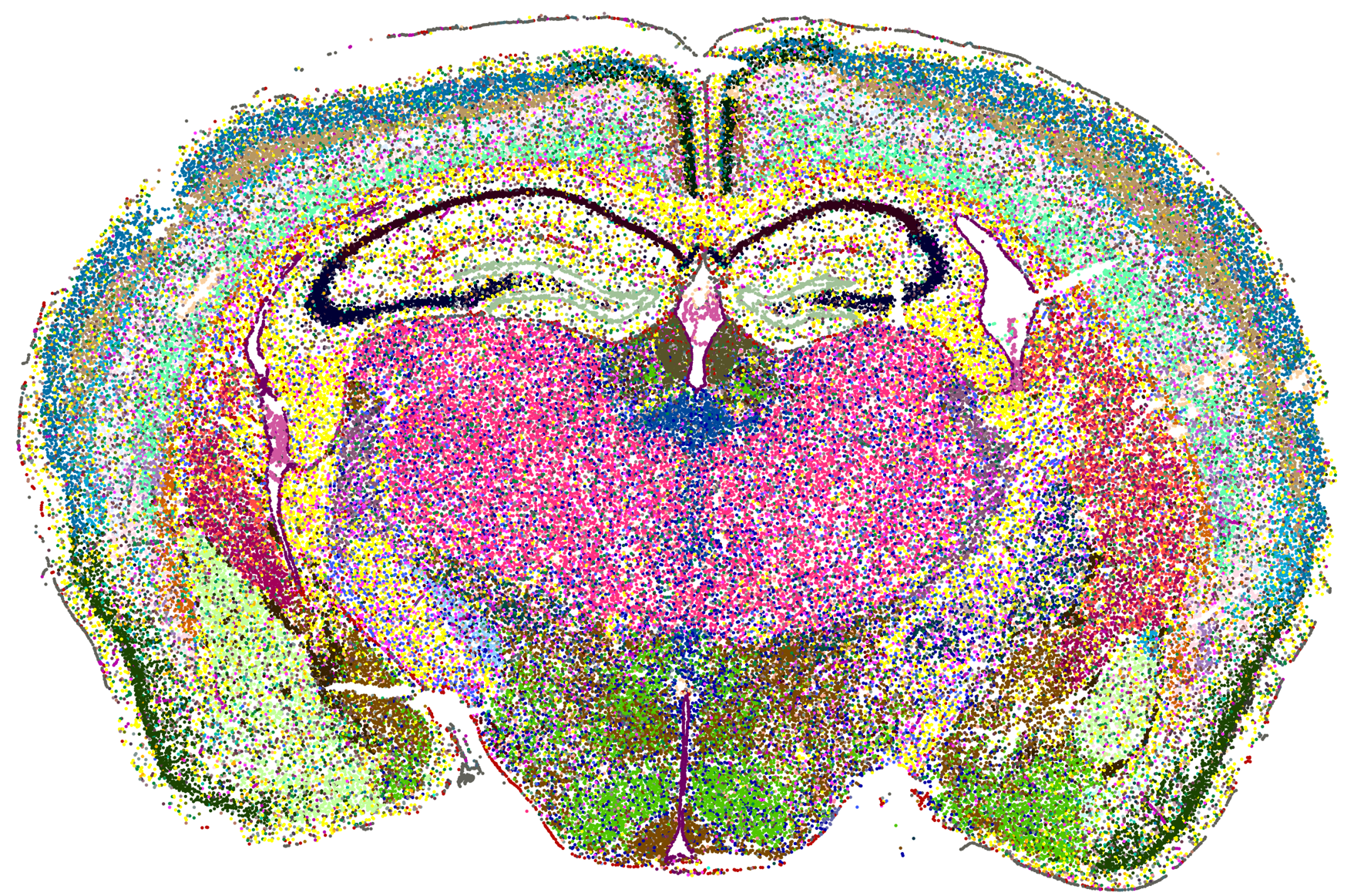
FIGURE 1
Figure 1. Spatial distribution of all cell clusters in one mouse coronal section.
MERSCOPE PanNeuro Cell Type Panel
Vizgen’s MERSCOPE PanNeuro Cell Type Panel features a curated list of 500 genes built to identify all major cell types and established neuron subtypes in the mouse brain.
MERSCOPE PanNeuro Cell Type Panel Advantages:
- Identify all major cell types including excitatory and inhibitory neurons, astrocytes, immune cells, oligodendrocytes, peripheral glial cells, and vascular cells
- Ability to resolve neuronal and non-neuronal cell subtypes
- Explore functional information of cell subtypes
- Applicable across all mouse brain regions
-
Compatible tissue types – Fresh frozen, fixed frozen, Cell culture
RESOURCE DOWNLOAD
Vizgen MERSCOPE™ Predesigned Panel Flyer
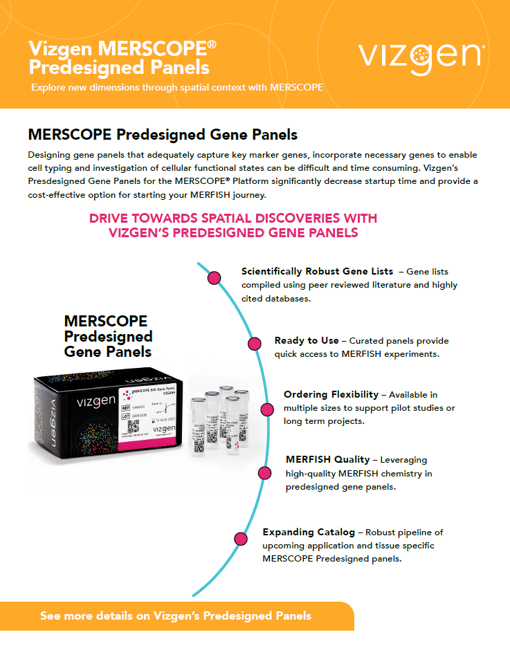
Download Now
Curated List of 500 Genes Focused on Cell Typing
Spatial transcriptomics provides powerful insights into complex biology but can require high costs in time and resources to build comprehensive gene panels of interest. We constructed the gene list using The Mouse Brain Atlas1, peer reviewed literature2-6, and Vizgen's published Mouse Brain dataset7 to build a biologically relevant cell typing panel.
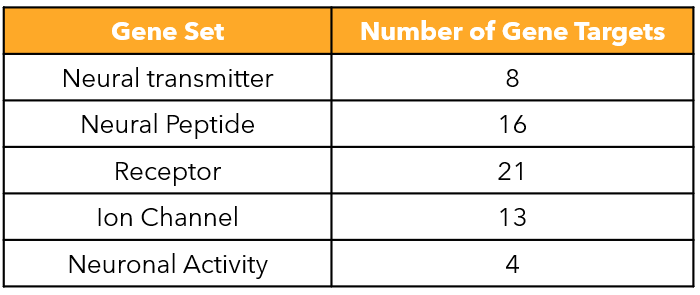
FIGURE 2
Figure 2: Partial list of neural function relevant genes included in the MERSCOPE PanNeuro Cell Type Panel.
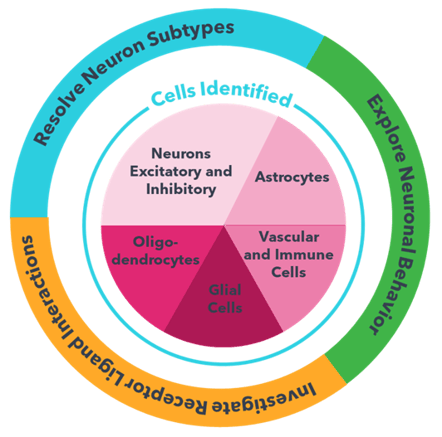
FIGURE 3
Figure 3: The MERSCOPE PanNeuro Cell Type Panel offers a powerful, rapidly available method to identify and subtype cells across the mouse brain and explore their cellular spatial distributions and cell interactions.
Validating the PanNeuro Cell Type Panel
The PanNeuro Cell Type Panel faithfully captures the gene expression profile of critical cell types in the mouse brain
Strong correlation between MERFISH technical replicates and between MERFISH and bulk RNA-seq data
Comparison of gene expression patterns detected by MERFISH and by in situ hybridization
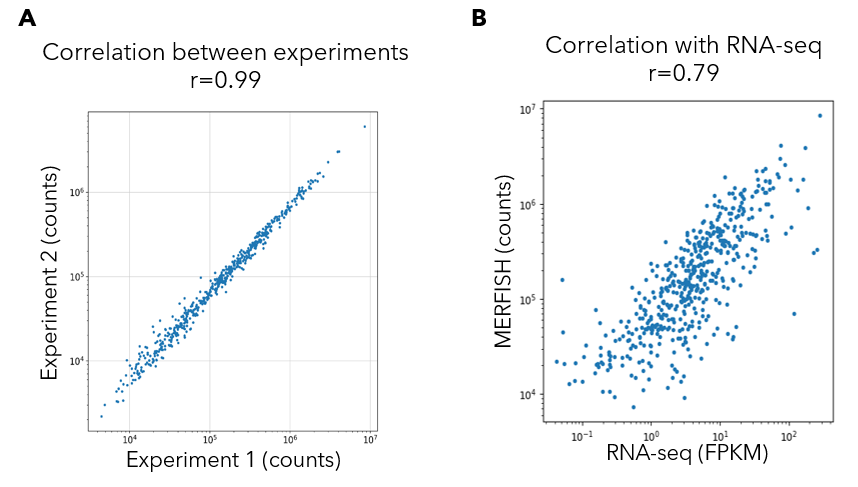
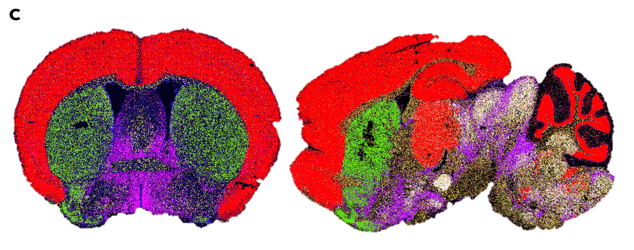

FIGURE 4
Figure 4: The PanNeuro Cell Type Panel faithfully detects gene expression in mouse brain. (A) Representative correlation of MERFISH data from two adjacent sagittal brain sections. (B) Representative correlation of MERFISH data from a matched coronal section with mouse brain bulk RNA-seq data. (C) The composite gene expression pattern for Slc17a7, Adora2a, Slc17a6, Oligo2, and Baiap3 as detected by MERSCOPE® in one coronal (left) and one sagittal (right) brain section. Different colors represent different transcripts. (D) The expression pattern of Slc17a7, Adora2a, Slc17a6, Oligo2, and Baiap3 as detected by MERSCOPE® (upper panels, breakout images from the coronal section in Figure 2C) and in situ hybridization (lower panels, images from the Allen Mouse Brain Atlas8. For all MERFISH data, different colors represent different transcripts.
References
- https://mouse.brain-map.org
- Saunders, A. et al. Molecular Diversity and Specializations among the Cells of the Adult Mouse Brain. Cell 174, 1015-1030 e1016 (2018).
- Zeisel, A. et al. Molecular Architecture of the Mouse Nervous System. Cell 174, 999-1014 e1022 (2018).
- Zhang, M. et al. Spatially resolved cell atlas of the mouse primary motor cortex by MERFISH. Nature 598, 137-143 (2021).
- Moffitt, J.R. et al. Molecular, spatial, and functional single-cell profiling of the hypothalamic preoptic region. Science 362, eaau5324 (2018).
- Chen, R. et al. Decoding molecular and cellular heterogeneity of mouse nucleus accumbens. Nat Neurosci 24, 1757-1771 (2021).
- https://vizgen.com/data-release-program
- Lein, E.S. et al. Genome-wide atlas of gene expression in the adult mouse brain. Nature 445, 168-176 (2007).
